Five centuries on, Milan still echoes with the genius of queer icon Leonardo da Vinci
Since his death more than 500 years ago, multihyphenate genius Leonardo da Vinci and his spectacular works have inspired respect and wonder in generation after generation the world over. An icon of the Renaissance, an inventor so ahead of his time that it’s taken centuries for many of his ideas to come to fruition, and the painter of some of the most stirring and famous works of art on the planet, Leonardo has also become a hero for LGBTQ people, who’ve long seen in his works and biography a host of beguiling clues to his queerness.
Yet non-Italians are often surprised to learn that it was Milan, not Florence, where Leonardo spent the bulk of his profusely productive professional life, and where one of his most recognizable works, “The Last Supper,” still graces the wall of the convent dining room where he painted it at the end of the 15th century. Milan is also where he met Gian Giacomo Caprotti, more commonly known as Salaì, the young male assistant and pupil who many historians believe also became his longest-term lover.
This week, as Milan plays host to the annual global convention for IGLTA, the International LGBTQ+ Travel Association, Italian tour operator Quiiky will be offering queer-themed Leonardo tours of the city, as it first began doing in 2017. The Milan IGLTA convention is a full-circle moment for the northern Italian city — originally slated for May 2020, the conference was rescheduled after Milan tragically became one of the world’s first major Covid hot spots early that year, just months after it had triumphantly completed in 2019 celebrations of the 500th anniversary of the master’s passing.
“Leonardo spent an important part of his life, more than 20 years, in Milan,” Quiiky CEO Alessio Virgili explained. “Here, he met Salaì in his artisan shop just close to the Duomo. Here, people can see one of his main masterpieces, ‘The Last Supper.’ In Milan, he also demonstrated himself to be an important engineer.”
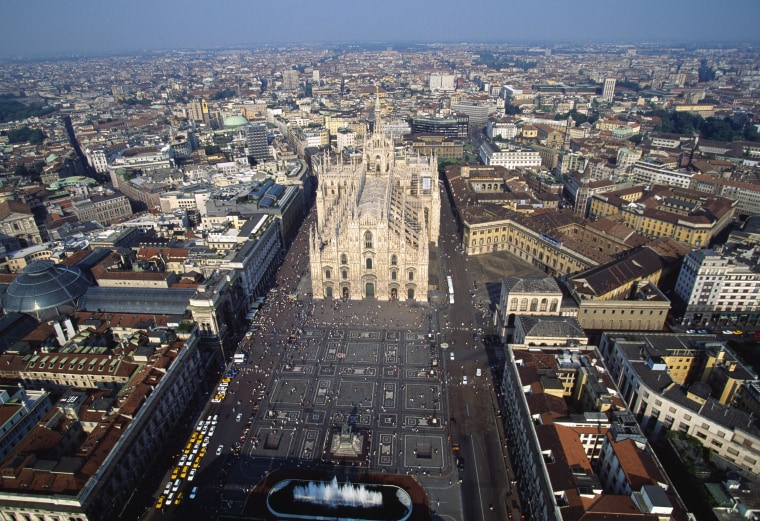
Indeed, it was Leonardo’s engineering prowess that first brought him to Milan in 1482, when he was 30. Though his motivations for leaving Florence are unclear — some historians say he may have been at least partially prompted by a desire to escape the cloud of sodomy allegations lodged against him in Florence a few years earlier — he sent the ambitious duke of Milan, Ludovico Sforza, a meticulous list of the advanced engineering projects and war machinery he could help him construct. Almost as an afterthought, he mentioned at the end of his pitch to Sforza that he was also an artist. “Likewise in painting, I can do everything possible as well as any other, whosoever he may be,” da Vinci offered, not incorrectly.
Today, his engineering genius and the advancements it inspired are showcased at Milan’s Museo Nazionale Scienza e Tecnologia Leonardo da Vinci, the largest science museum in Italy. The museum’s Leonardo da Vinci Galleries, reimagined for the 2019 celebrations, use more than 170 historical models, artworks, codexes and installations to bring the artist’s story to life.
Much of his time in Milan was spent working in the duke’s castle, Castello Sforzesco, still one of the top attractions in the city. The artist’s most lasting legacy at the castle itself is the Sala delle Asse, where he painted the walls and the ceiling to resemble a pergola of mulberry trees, bringing the outside in for the duke who loved beauty and hosting elaborate parties. Unfortunately, the Sala delle Asse has been off- limits to visitors for most of the last decade while it undergoes painstaking restoration, but its completion is promised soon.
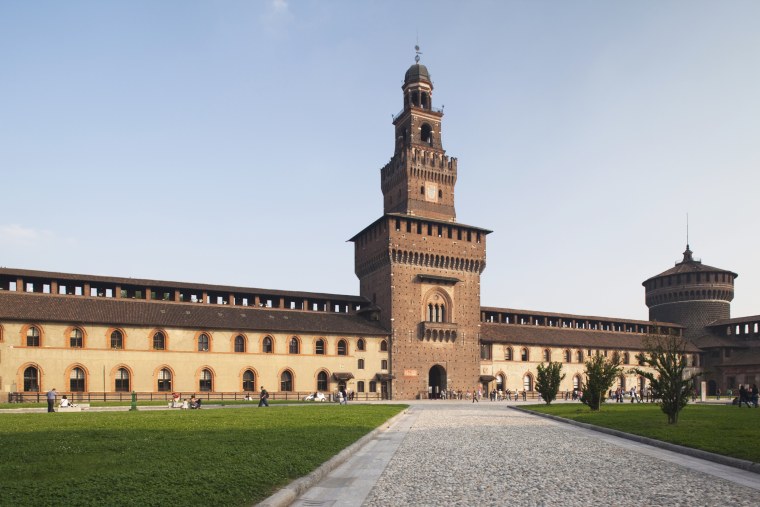
A few blocks from the castle is Milan’s most popular Leonardo attraction by far, his mural “The Last Supper,” painted about 1495 to 1498 on the refectory wall of the Convent of Santa Maria delle Grazie. While paintings depicting Jesus’ final meal as surrounded by his 12 apostles were commonplace, if not obligatory, for important churches of his day, it was the artist’s wholly unique approach to the subject matter that stunned contemporary viewers as it still does today. Surrounding a world-weary Jesus, each apostle distinctly reacts with palpable animation to the shocking news that Jesus has just delivered to them: that one of them will soon betray him.
For centuries, conjecture has been rampant regarding a particularly curious element of “The Last Supper”: the androgyny of John the Apostle, seated just to the right of Jesus. So delicate are John’s features that they even spawned one of the main plotlines in the blockbuster book and film “The Da Vinci Code,” which claimed that the figure is not John at all, but Mary Magdalene.
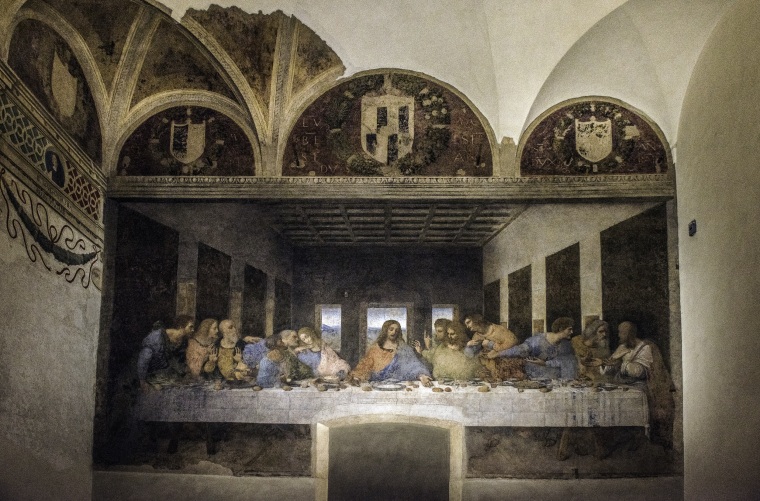
Just across the street from Santa Maria delle Grazie is La Vigna di Leonardo (Leonardo’s Vineyard), a favorite site for modern LGBTQ visitors, thanks both to its queer history and its tranquil beauty.
“I imagine the master and his boyfriend lying in this vineyard he owned next to the place where he painted ‘The Last Supper,’” shared Italian journalist and documentarian Stefano Paolo Giussani, author of the 2020 book “Leonardo andrebbe al Pride?” (“Would Leonardo Go to Pride?”). “We know that Leonardo spent most of his life with Gian Giacomo Caprotti, known as Salaì, a nickname meaning ‘little devil.’ Salaì joined his household in 1490 as an assistant and went on to train as a painter. From then on, they lived, worked and traveled together, even sharing the same wardrobe.”
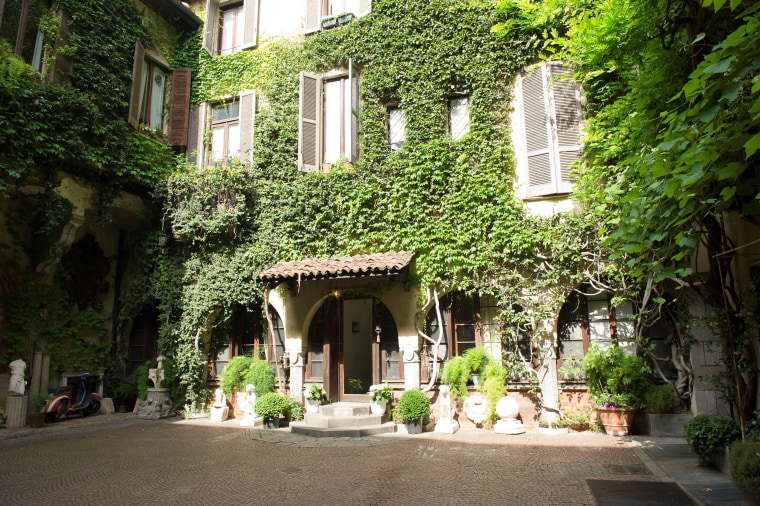
Leonardo’s Vineyard lies at the bottom of the garden at the 15th century mansion Casa degli Atellani, exactly as it did when Sforza gave the land to the artist more than 520 years ago.
“In his will, Leonardo left the property to Salaì, which means a lot,” Giussani said. “After five centuries, the courtyard is nearly untouched, and it is a small silent corner right in the city center.”
Get the Morning Rundown
Get a head start on the morning’s top stories.SIGN UPTHIS SITE IS PROTECTED BY RECAPTCHA PRIVACY POLICY | TERMS OF SERVICE
Virgili concurred, saying, “This is an enchanting place in the center of Milan where sometimes it’s possible to do some Italian wine tasting surrounded by greenery.”
Another top Milan site for diving into Leonardo is the Biblioteca Ambrosiana (Ambrosian Library), which houses the Codex Atlanticus, the largest collection of his bound original writings and drawings. In all, the codex consists of 12 volumes of 1,119 pages dating from 1478 to 1519, covering a vast litany of his interests including astronomy, music, mathematics, recipes, fables, weaponry, botany and flight.

The Ambrosiana also houses the 1511 painting “Head of Christ the Redeemer,” inscribed with the name Salaì and thus attributed to the artist’s pupil/partner, though some scholars believe Salaì may have been the model for the painting rather than the painter.
While speculation has also swirled around Leonardo’s romantic links to other men, it is Salaì who remains the most enduring candidate as his probable partner. Some historians even believe that the “Mona Lisa,” hiss most famous painting — if not the most celebrated work in the history of art — is a portrait of Salaì, and they see further evidence in the fact that the piece’s very name is an anagram of Mon Salaì, French for “My Salaì.”
Recommended

OUT NEWSFlorida medical board votes to ban gender-affirming care for transgender minors

OUT NEWSKroger to pay $180K after firing workers who refused to wear logo allegedly resembling Pride flag
So, was Leonardo what we would now consider gay? And does it matter for modern LGBTQ society?
“Gay is a modern expression that has several meanings and connotations that cannot easily be applied to a man who lived in the 15th century,” said Roberto Muzzetta, secretary of international relations for Arcigay, Italy’s first and largest LGBTQ rights organization. “However, there are many facts about Leonardo’s life that make us think that he might have been homosexual. He was charged of sodomy when he was young, and there were many substantial rumors about the nature of his relationship with some of his pupils such as Salaì or Francesco Melzi, who became his principal heir at Leonardo’s death.”
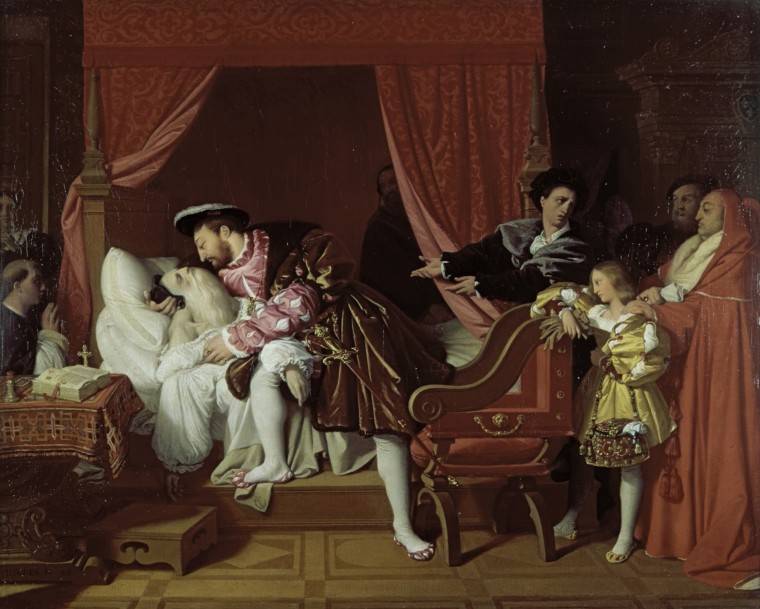
Giussani noted that there is “no evidence at all that Leonardo ever slept with a woman.”
“Regarding his work, during his whole life Leonardo was much more interested in drawing men and in dealing with studies related to men’s bodies,” Giussani added. “He also drew the anus giving it the guise of a gentle flower. That’s why I like to think of him as a very fascinating man [who was] probably gay.”
As for Virgili, he said he believes Leonardo “was gay and maybe something more.”
“I personally believe that he was a real genius, and for this reason his mind was very open,” he explained. “A person’s sexuality did not matter to him, as he was attracted by souls.”
Giussani agreed that as a queer icon, Leonardo’s legacy is just as vital to us in terms of gender expression as sexuality.
“He was the first very popular artist of his kind who painted and drew figures that we could define as gender fluid,” Giussani said. “Some of his work can be defined as genderless. The lesson he is giving us is much more related to the soul rather than the sex.”